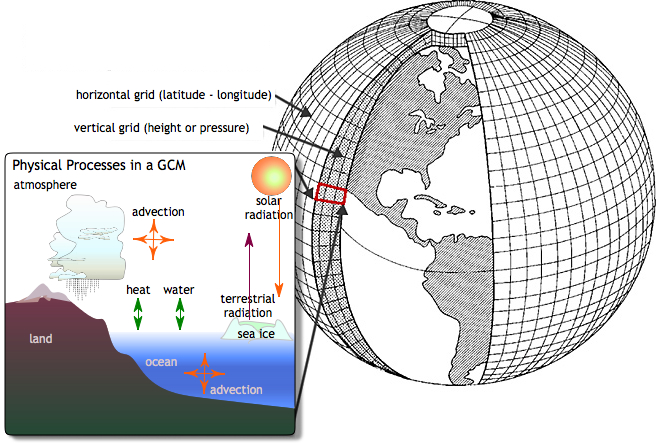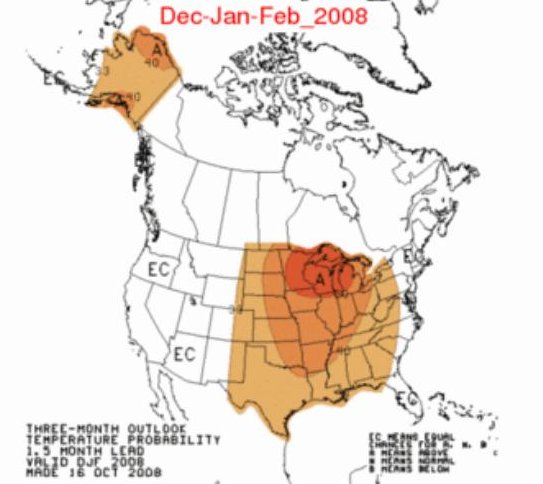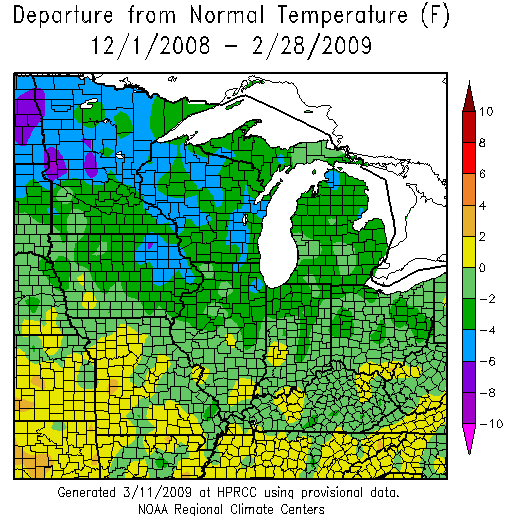Global Climate Models (GCM's) are very complex computer models containing millions of lines of code, which attempt to model cosmic, atmospheric and oceanic processes that affect the earth's climate. This have been built over the last few decades by groups of very bright scientists, including many of the top climate scientists in the world.
During the 1980s and 1990s, the earth warmed at a faster rate than it did earlier in the century. This led some climate scientists to develop a high degree of confidence in models which predicted accelerated warming, as reflected in IPCC reports. However, during the last decade the accelerated warming trend has slowed or reversed. Many climate scientists have acknowledged this and explained it as "natural variability" or "natural variations." Some believe that the pause in warming may last as long as 30 years, as recently reported by The Discovery Channel.
But just what's causing the cooling is a mystery. Sinking water currents in the north Atlantic Ocean could be sucking heat down into the depths. Or an overabundance of tropical clouds may be reflecting more of the sun's energy than usual back out into space.What has become obvious is that there are strong physical processes (natural variations) which are not yet understood, and are not yet adequately accounted for in the GCMs. The models did not predict the current cooling. There has been lots of speculation about what is causing the present pattern - changes in solar activity, changes in ocean circulation, etc. But whatever it is, it is not adequately factored into any GCMs.
"It is possible that a fraction of the most recent rapid warming since the 1970's was due to a free variation in climate," Isaac Held of the National Oceanic and Atmospheric Administration in Princeton, New Jersey wrote in an email to Discovery News. "Suggesting that the warming might possibly slow down or even stagnate for a few years before rapid warming commences again."
Swanson thinks the trend could continue for up to 30 years. But he warned that it's just a hiccup, and that humans' penchant for spewing greenhouse gases will certainly come back to haunt us.
One of the most fundamental rules of computer modeling is that if you don't understand something and you can't explain it, you can't model it. A computer model is a mathematical description of a physical process, written in a human readable programming language, which a compiler can translate to a computer readable language. If you can not describe a process in English (or your native tongue) you certainly can not describe it mathematically in Fortran. The Holy Grail of climate models would be the following function, which of course does not exist.
FUNCTION FREEVARIATION(ALLOTHERFACTORS)Current measured long term warming rates range from 1.2-1.6 C/century. Some climatologists claim 6+C for the remainder century, based on climate models. One might think that these estimates are suspect, due to the empirically observed limitations of the current GCMs. As one small example, during the past winter NOAA's Climate Prediction Center (CPC) forecast that the upper midwest would be above normal temperatures. Instead the temperatures were well below normal.
C Calculate the sum of all other natural factors influencing the temperature
.....
RETURN
END
Another much larger example is that the GCMs would be unable to explain the causes of ice ages. Clearly the models need more work, and more funding. The BBC printed an article last year titled "Climate prediction: No model for success ."
And Julia Slingo from Reading University (Now the UK Met Office's Chief Scientist) admitted it would not get much better until they had supercomputers 1,000 times more powerful than at present.I am not denigrating the outstanding work of the climate modelers - rather I am pointing out why GCMs may not be quite ready yet for forecasting temperatures 100 years out, and that politicians and the press should not attempt to make unsupportable claims of Armageddon based on them. I would appreciate it if readers would keep this in mind when commenting on the work of scientists, who for the most part are highly competent and ethical people, as is evident from this UK Met Office press release.
"We've reached the end of the road of being able to improve models significantly so we can provide the sort of information that policymakers and business require," she told BBC News.
"In terms of computing power, it's proving totally inadequate. With climate models we know how to make them much better to provide much more information at the local level... we know how to do that, but we don't have the computing power to deliver it."
......
One trouble is that as some climate uncertainties are resolved, new uncertainties are uncovered.
Some modellers are now warning that feedback mechanisms in the natural environment which either accelerate or mitigate warming may be even more difficult to predict than previously assumed.
Research suggests the feedbacks may be very different on different timescales and in response to different drivers of climate change
.......
"If we ask models the questions they are capable of answering, they answer them reliably," counters Professor Jim Kinter from the Center for Ocean-Land-Atmosphere Studies near Washington DC, who is attending the Reading meeting.
"If we ask the questions they're not capable of answering, we get unreliable answers."
Stop misleading climate claims
11 February 2009
Dr Vicky Pope
Dr Vicky Pope, Met Office Head of Climate Change, calls on scientists and the media to 'rein in' some of their assertions about climate change.
She says: "News headlines vie for attention and it is easy for scientists to grab this attention by linking climate change to the latest extreme weather event or apocalyptic prediction. But in doing so, the public perception of climate change can be distorted. The reality is that extreme events arise when natural variations in the weather and climate combine with long-term climate change. This message is more difficult to get heard. Scientists and journalists need to find ways to help to make this clear without the wider audience switching off.






Reader Comments
to our Newsletter